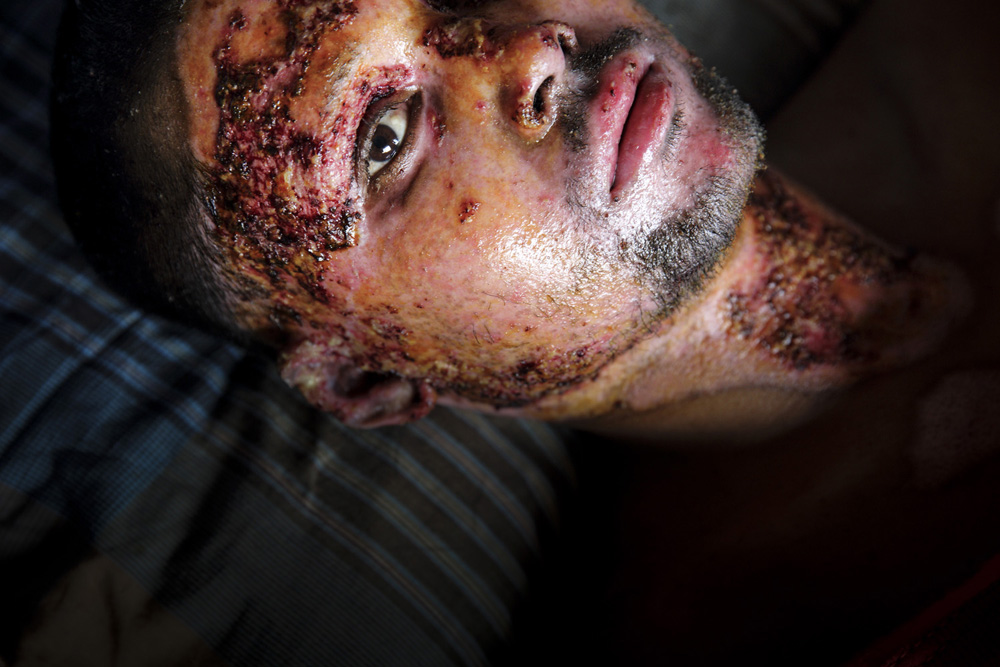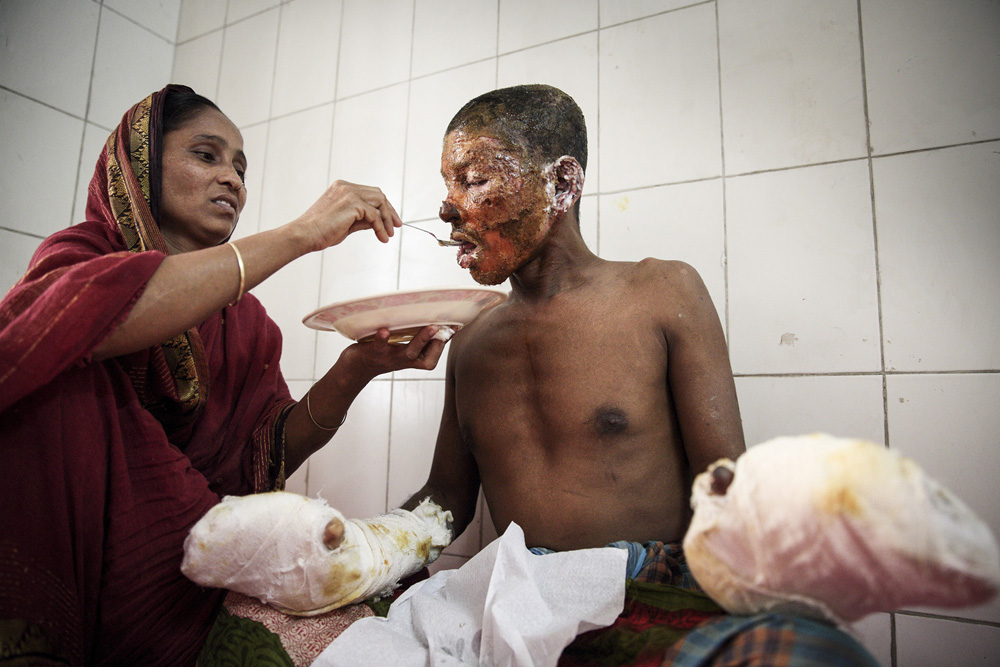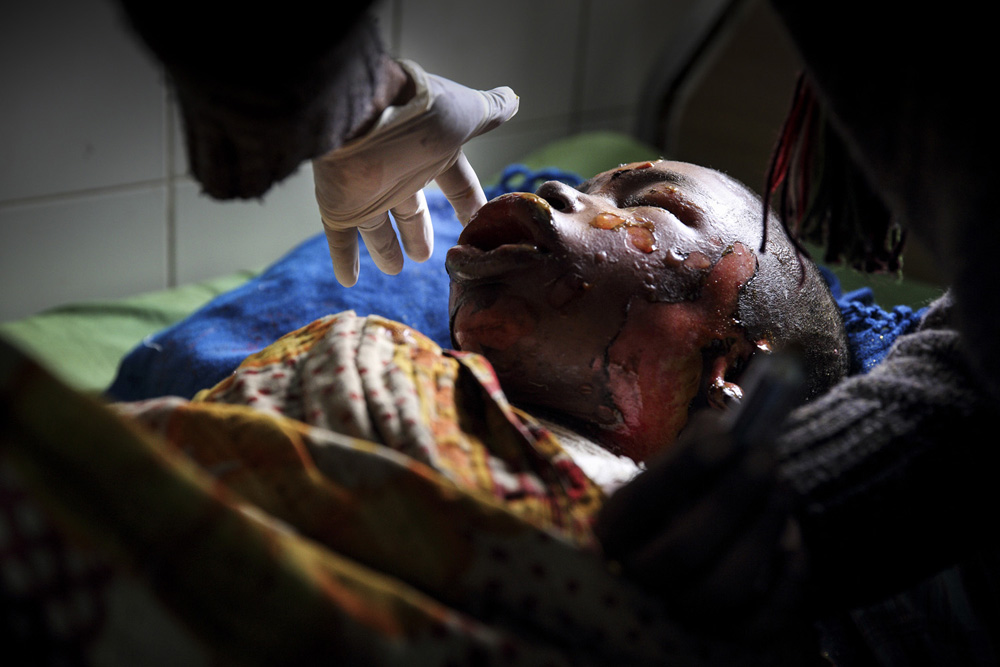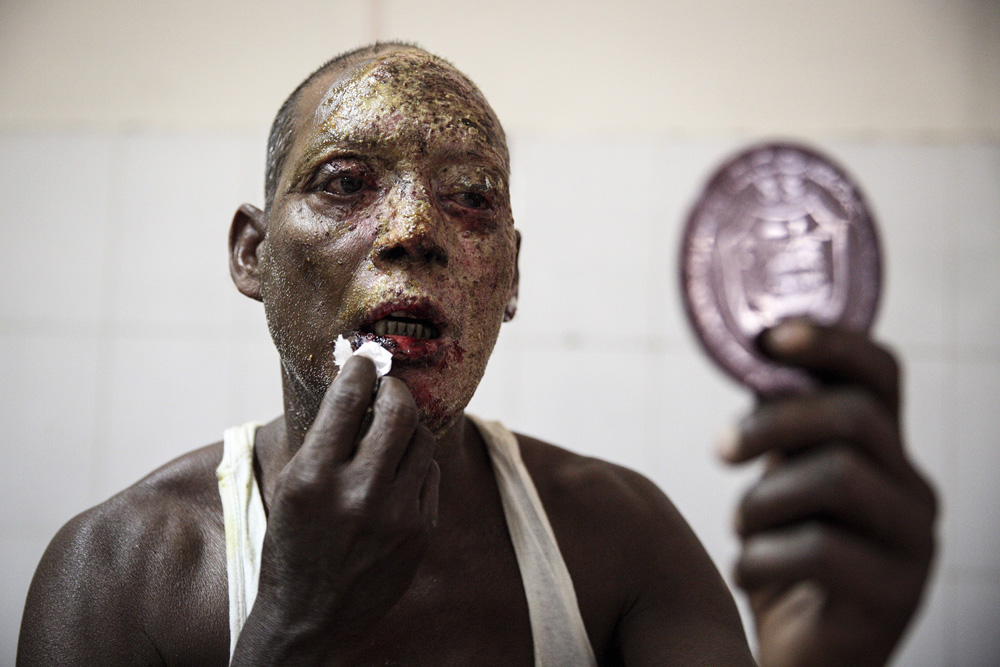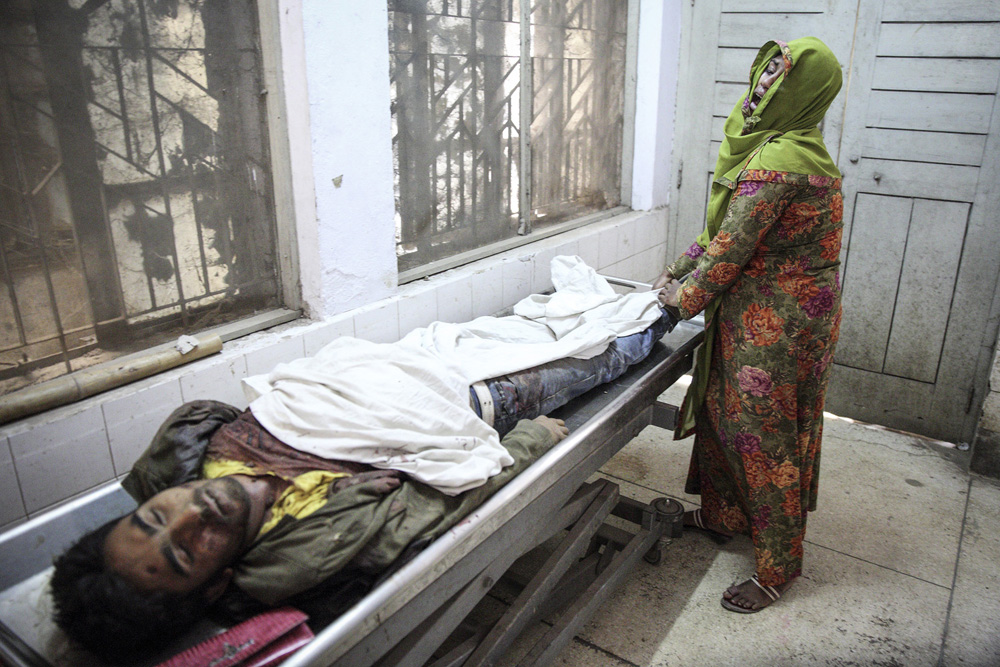This website uses cookies so that we can provide you with the best user experience possible. Cookie information is stored in your browser and performs functions such as recognising you when you return to our website and helping our team to understand which sections of the website you find most interesting and useful.
Life on Fire: Victims of Petrol bomb
-
PrizeBronze in Press/Political, Bronze in Press/Political
-
PhotographerGMB Akash, Bangladesh
-
StudioPanos pictures
-
Website
Continuous strikes, blockades and extreme violence has turned regular expression and
political protests into a campaign of violence upon the general public, forging innocent
people into the victims of violent attacks.
Dhaka Medical College Hospital (DMCH), Burn Unit doctors said that most of the petrol bomb
victims were burnt from 20 percent to 40 percent of their bodies. At least 76 people have
been killed and 225 people have been burnt in petrol bomb attacks across the country
during political blockade started in January, 2015.
A continuous blockade interspersed with hartals (general strikes) has been going on since
the 6th January, 2015. It was called by the 20-Party Alliance demanding the resignation of
the Awami League government which came into power through the one-sided election of the
5th January. The protests have become increasingly violent and nearly 1,000 vehicles have
been torched or vandalized. The security forces have in turn arrested more than 10,000
opposition supporters while more than a dozen protesters have been shot dead, prompting
allegations of a shoot-to-kill strategy. There has been an outbreak of violence and
innocent ordinary people are being killed. Petrol bomb attacks on vehicles in Bangladesh
are leaving people dead, destroying families and terrorizing normal society. Dhaka. Bangladesh
Growing up in a developing country filled with millions of impoverished people and abused children, I had access to the darkest corners of the world. Overwhelmed with compassion and empathy for those people in my photographs, I was determined to give a voice to the voiceless and have it heard around the world. However, at one point I realized that just effectively reporting the human rights injustices through my images was not enough. I repeatedly asked myself then; what changes have my photos brought to the lives of my subjects of abuse and suffering? I knew that as a photojournalist that it was my duty to tell the truth but besides that, as a human being I believed that it was my moral duty to find ways to alleviate the pain of abuse and poverty of those people in my photographs.
It was at that time that I decided to dedicate myself to what became more than 10 years of my life to photographing 'Survivors'. This resulted in a self-published photography book depicting the invincibility of the human spirit to survive against all odds. The proceeds from the book and subsequent exhibitions go to helping the subjects in that book set up small businesses for which I train them and monitor their progress in order to make them and their families self-sufficient.
Awards I have received more than 80 international awards and my work has been featured in over 90 major, international publications including: National Geographic, Vogue,Time, Sunday Times, Newsweek, Geo, Stern, Der Spiegel, The Fader, Brand Ein, The Guardian, Marie Claire, Colors, The Economist, The New Internationalist, Kontinente, Amnesty Journal, Courier International, PDN, Die Zeit, Days Japan, Hello, andSunday Telegraph of London.
In 2002 I became the first Bangladeshi to be selected for the World Press Photo Joop Swart Masterclass in the Netherlands. In 2004 I received the Young Reporters Award from the Scope Photo Festival in Paris — once again, the first Bangladeshi to receive this honour. In 2005 I was awarded "Best of Show" at the Center for Fine Art Photography's international competition in Colorado, USA. And in 2006 I was awarded World Press Photo award and released my premier book "First Light". In 2007 I became the first Bangladeshi to be selected for the 30 Emerging Photographers (PDN 30), sponsored by Photo District News Magazine, USA. I won the 7th Vevey International Photography Grant from Switzerland in 2009 and in the same year, I took home the international 'Travel photographer of the Year" title at the International Travel Photographer of the Year Competition (TPOY 2009) in the UK, the most prestigious award in travel photography.
I was one of the speakers in the fifth Global Investigative Journalism Conference, held at Lillehammer, Norway in 2008 and as well I was the first Bangladeshi in Ted talk at TEDxOporto 2011, in Portugal. I was one of the speaker of "7th Forum of Emerging Leaders in Asian Journalism", Yogyakarta / Indonesia". In 2011 Nikon has selected me as one of the 8 influencers in Asia pacific (APAC region). Presentation of my 10 years project published as form of book 'Survivors' in 2012, which has reviewed by prestigious Geo magazine. I performed as Jury in several international photo contest such as Friends of the Earth International Photo Competition (The Netherlands), The Worldwide photography Gala Award ( UK),Garuda Indonesia World Photo Contest 2014, (Indonesia), Fine Art Photography Award, UK, Siena International Photography Awards – SIPA, (Italy) and many more.
I founded the FIRST LIGHT INSTITUTE OF PHOTOGRAPHY in Narayangonj (near Dhaka), Bangladesh in August, 2013. Along with guest master photographers, I am teaching photography in workshops and seminars for aspiring young photographers at reasonable tuition. The proceeds from this are to help achieve my ultimate objective of providing basic education for street children, child sex workers, and child laborers.
I started studying this art and techniques, firstly in Bangladesh and then continued my studies in the Philippines at Ateneo de Manila University did my Diploma in Multimedia Journalism.
Growing up in a developing country filled with millions of impoverished people and abused children, I had access to the darkest corners of the world. Overwhelmed with compassion and empathy for those people in my photographs, I was determined to give a voice to the voiceless and have it heard around the world. However, at one point I realized that just effectively reporting the human rights injustices through my images was not enough. I repeatedly asked myself then; what changes have my photos brought to the lives of my subjects of abuse and suffering? I knew that as a photojournalist that it was my duty to tell the truth but besides that, as a human being I believed that it was my moral duty to find ways to alleviate the pain of abuse and poverty of those people in my photographs.
It was at that time that I decided to dedicate myself to what became more than 10 years of my life to photographing 'Survivors'. This resulted in a self-published photography book depicting the invincibility of the human spirit to survive against all odds. The proceeds from the book and subsequent exhibitions go to helping the subjects in that book set up small businesses for which I train them and monitor their progress in order to make them and their families self-sufficient.
